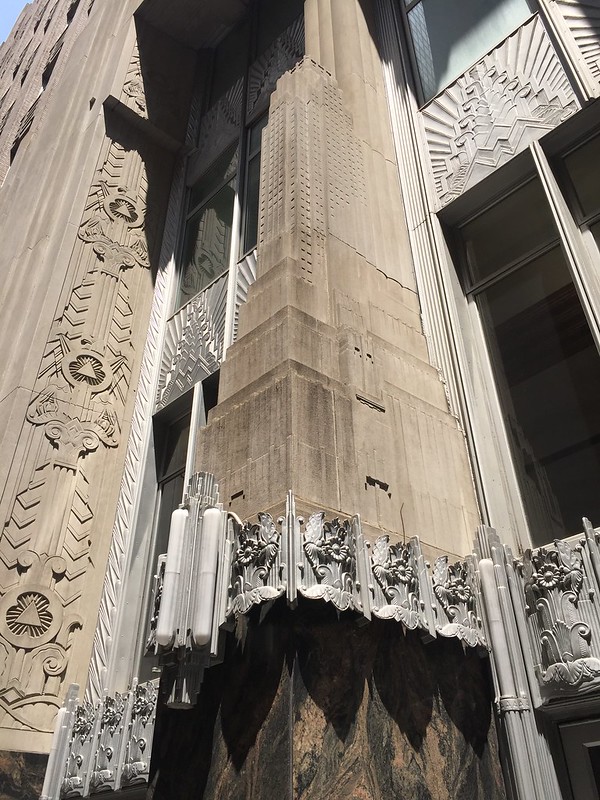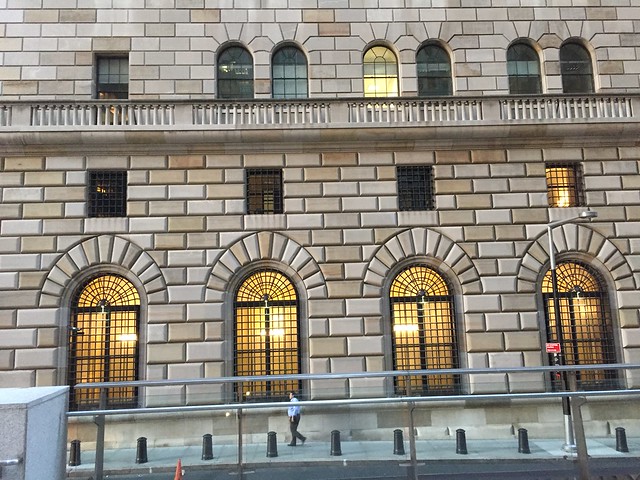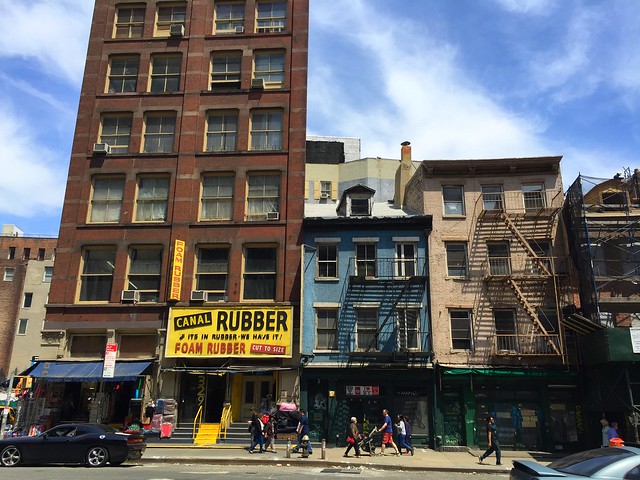
Hard to believe that it has been 16 years since that morning. I was in my second year of college at The New School. A few lines from a piece that I wrote shortly afterwards (mostly, just for myself, so that I would later be able to remember exactly what I’d experienced):
I went upstairs to class and took a seat. My advisor, Henry, was already there, getting organized. A minute later the second professor showed up. A small argument ensued between the two.
“Do you know what’s going on out there?” said Stuart.
“Yes, but I think we need to go on with class,” said Henry.
“A lot of people are out there watching…. We may not have everyone.”
“Well, I’m not much for that. We should go on with who we have.”
“Well, it’s pretty hard not to watch … the fucking World Trade Center is on fire. Another plane just crashed into the South Tower.” Everyone in the room was jarred.
“Oh my God. Some kind of … attack?”
“Oh yeah, it’s definitely an attack.”
“Well, what do you think? I mean, it’s important … but I think what we are doing here is important, too.”
“That’s true.”
“I mean poetry isn’t the least important thing.”
“No, definitely not. I guess we should go on.”
“Yes, I think that would be the right thing to do.”
Later, after the class had finally been dismissed:
I turned left and walked on through the grid of streets, up through the warehouses and housing projects beyond Ninth Avenue. I wasn’t sure where I was going; I just gravitated in what seemed to be the right direction. I lived in Brooklyn Heights that semester, but I was walking the opposite way. Getting back to my room would have involved either a long detour through Williamsburg, or a trip straight through the scene. Instead, I thought I might have to walk all the way to my uncle’s apartment on 207th Street — and I didn’t know if anyone would be home, if I did.
I managed to stay cool-headed, but I was really unsure of what I should do. I kept going north and west. Getting out of the heart of the city seemed like the main idea. At some point, it occurred to me that a ferry might be crossing to New Jersey, so I made my way west to the Hudson River. If I went back to the town where I had gone to high school, I would find someone to put me up overnight. It wasn’t far away; just across the river from the city. But it was a different world. By that point, I was sure that I didn’t want to go back to Brooklyn….
There were thousands of people walking up Twelfth Avenue. Most of them had walked all the way up from the site. People were sort of talking to each other briefly and moving on. It was strange. You don’t usually talk to strangers in a moving crowd, but everything was different then. Normal street smarts seemed useless. The ethos of minding your own business and ignoring anything out of the ordinary? I knew that would not work anymore. But how could you replace it with something else?
There was a middle-aged man in a suit who told me he worked at the World Financial Center. His hair and jacket were covered with gray ash. When the first plane smashed into the North Tower, he began to leave, but his boss said, in all seriousness: “That’s a World Trade Center problem. This is the World Financial Center. Get back to work.” I laughed, and he moved on.
There’s more, but it’s not really in any shape to be posted. Maybe one day I’ll clean it up and share it here as a single piece of writing.
Read Full Post »

 My favorite of the city’s Art Deco skyscrapers, this soaring Pine Street tower was built as the headquarters of the Cities Service Company, predecessor of Citgo. The Cities Service logo — a pyramid within a cloverleaf, usually black or green in trade dress — can be found pervasively worked into the concrete and metal exterior details, and the interior details, as well. Designed by architects at Clinton & Russell and Holton & George, the 952-foot tower opened in 1932.
My favorite of the city’s Art Deco skyscrapers, this soaring Pine Street tower was built as the headquarters of the Cities Service Company, predecessor of Citgo. The Cities Service logo — a pyramid within a cloverleaf, usually black or green in trade dress — can be found pervasively worked into the concrete and metal exterior details, and the interior details, as well. Designed by architects at Clinton & Russell and Holton & George, the 952-foot tower opened in 1932.








You must be logged in to post a comment.